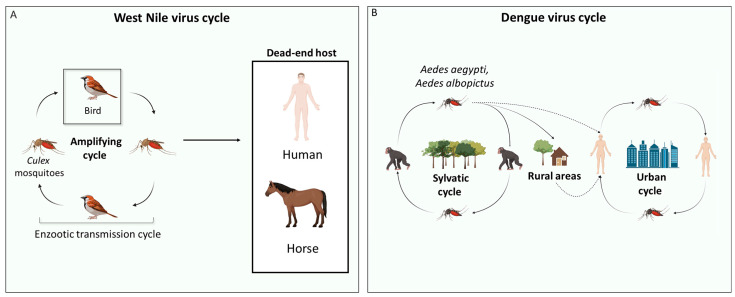Figure 1.
Life cycles of West Nile virus and dengue virus. (A) The life cycle of West Nile virus (WNV) is shown. The amplifying host is represented by a bird in which, after viral replication, the viral load in the blood is high enough to infect Culex mosquitoes. Humans and horses are considered the main hosts of WNV. They are known as dead-end hosts because their blood viremia is not high enough to infect other mosquitoes. (B) The sylvatic and urban cycles of dengue virus (DENV) are shown. In the sylvatic cycle, DENV is maintained mainly by Aedes mosquitoes and monkeys. The transition from the sylvatic to the urban cycle occurs in two ways: (i) DENV-infected mosquitoes move directly from the sylvatic to the urban area and infect humans; (ii) DENV-infected mosquitoes bite humans living in rural areas, who then move to urban areas. DENV is maintained in the urban cycle by Ae. aegypti mosquitoes and humans. The above image was created with https://www.biorender.com/ (accessed on 15 July 2024).

